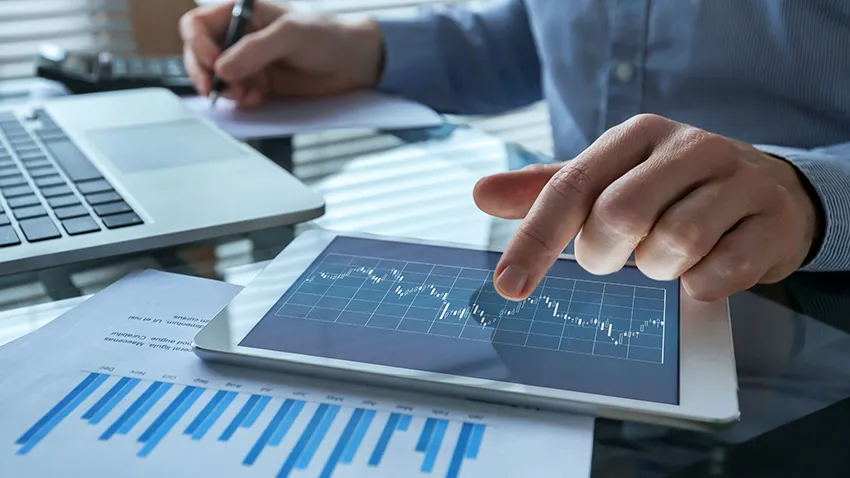The Impact of Market Volatility on CFD Trading
Contracts for Difference (CFDs) are versatile financial instruments that allow traders to speculate on the price movements of various assets without owning the underlying asset itself. This article explores how market volatility influences CFD trading, shaping both opportunities and risks for traders.
Understanding Market Volatility
Market volatility refers to the degree of variation in the price of a financial instrument over time. Several factors contribute to volatility, including economic indicators such as GDP growth rates and inflation, political events, corporate earnings reports, and global economic trends. Natural disasters and geopolitical tensions can also significantly impact market stability.
Measuring market volatility involves using tools like volatility indices (e.g., VIX), which gauge investor sentiment and expected future volatility. Traders also analyse standard deviation and beta coefficients to understand the historical volatility of assets and compare it with implied volatility, which reflects market expectations. Find out more about ADSS to get started.
The Relationship Between Market Volatility and CFD Trading
Let’s explore the relationship between market volatility and CFD trading.
Increased Trading Opportunities
Volatility creates a fertile ground for traders seeking opportunities. Sharp price movements allow for quick profit potential, particularly in highly volatile markets like commodities and cryptocurrencies. For example, during periods of economic uncertainty, CFD traders may capitalise on price swings in gold or oil markets.
Higher Risk and Reward
With increased volatility comes heightened risk and potential reward. While volatile markets offer the possibility of substantial returns, they also expose traders to greater financial risk. The allure of higher profits often necessitates careful risk management strategies to protect capital.
Leverage and Margin Calls
Leverage amplifies both gains and losses in CFD trading. During volatile periods, margin requirements may increase as brokers seek to mitigate their exposure to market fluctuations. Traders must monitor their positions closely to avoid margin calls, which occur when losses exceed the available margin.
Strategies for Managing Volatility in CFD Trading
Let’s explore strategies for managing volatility in CFD trading.
Risk Management Techniques
Effective risk management is crucial in volatile markets. Traders employ stop-loss and take-profit orders to automate trade exits at predetermined price levels. Position sizing ensures that no single trade excessively depletes trading capital, while diversification across different asset classes spreads risk. Hedging strategies, such as pairing long and short positions, can also mitigate exposure to market volatility.
Technical Analysis Tools
Technical analysis helps traders identify trends and anticipate price movements based on historical data. Tools like moving averages and Bollinger Bands provide insights into market momentum and potential reversals. Oscillators such as the Relative Strength Index (RSI) and Moving Average Convergence Divergence (MACD) help gauge overbought or oversold conditions. Volatility-based indicators like the Average True Range (ATR) assist in assessing the potential range of price movements.
Fundamental Analysis
In volatile markets, fundamental analysis remains pivotal. Traders stay informed about economic news releases, earnings reports, and geopolitical developments that can sway market sentiment. Understanding the underlying factors driving volatility enables traders to make informed decisions and adapt their strategies accordingly.
Psychological Impact of Volatility on Traders
Let’s explore the psychological impact of volatility on traders.
Emotional Responses to Market Swings
Market volatility evokes emotional responses such as fear and greed among traders. Fear of missing out (FOMO) may drive impulsive trading decisions, while fear of loss can lead to hesitation or panic selling. Greed, on the other hand, can tempt traders to chase high-risk opportunities without adequate caution.
Maintaining Discipline and Focus
Maintaining discipline is paramount during volatile periods. Traders adhere to a well-defined trading plan that outlines entry and exit criteria, risk tolerance, and profit targets. Techniques such as mindfulness and stress management help mitigate emotional biases that can cloud judgment and lead to irrational decisions.
Coping Mechanisms for Stress
Engaging with supportive trading communities provides emotional support and facilitates knowledge sharing. Stress management techniques such as meditation, exercise, and maintaining a balanced lifestyle help traders cope with the pressures of volatile trading environments.
The Future of CFD Trading in Volatile Markets
Advances in technology, including artificial intelligence (AI) and machine learning algorithms, revolutionise CFD trading. Automated trading systems execute trades based on predefined criteria, leveraging data analytics to identify patterns and optimise trading strategies in volatile conditions.
Regulatory frameworks continue to evolve to safeguard investors and maintain market integrity. Recent reforms may impact leverage limits, margin requirements, and transparency in CFD trading practices. Traders must stay abreast of regulatory developments to comply with regulatory obligations and protect their interests.
Successful traders adapt their strategies to evolving market conditions. Continuous learning and development enhance traders’ ability to navigate volatile markets effectively. Flexibility in adjusting trading approaches and embracing innovative tools and methodologies are critical to achieving sustained profitability.
Conclusion
Market volatility significantly influences CFD trading, presenting both opportunities and risks for traders. Understanding the drivers of volatility, employing effective risk management strategies, utilising technical and fundamental analysis tools, and managing psychological responses are essential to thriving in volatile market environments. By embracing technological advancements and staying informed about regulatory changes, traders can position themselves for success amidst market uncertainties.

